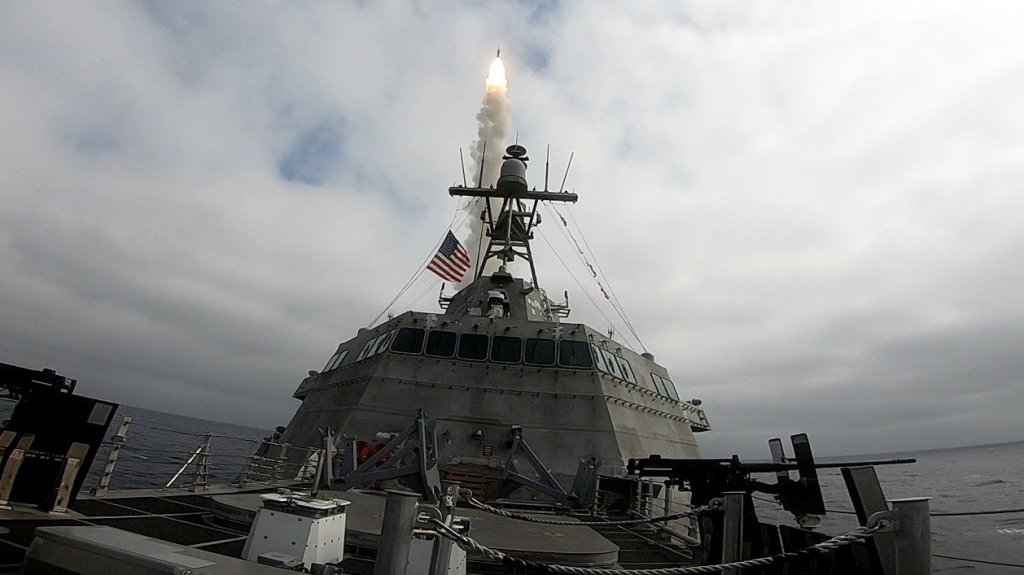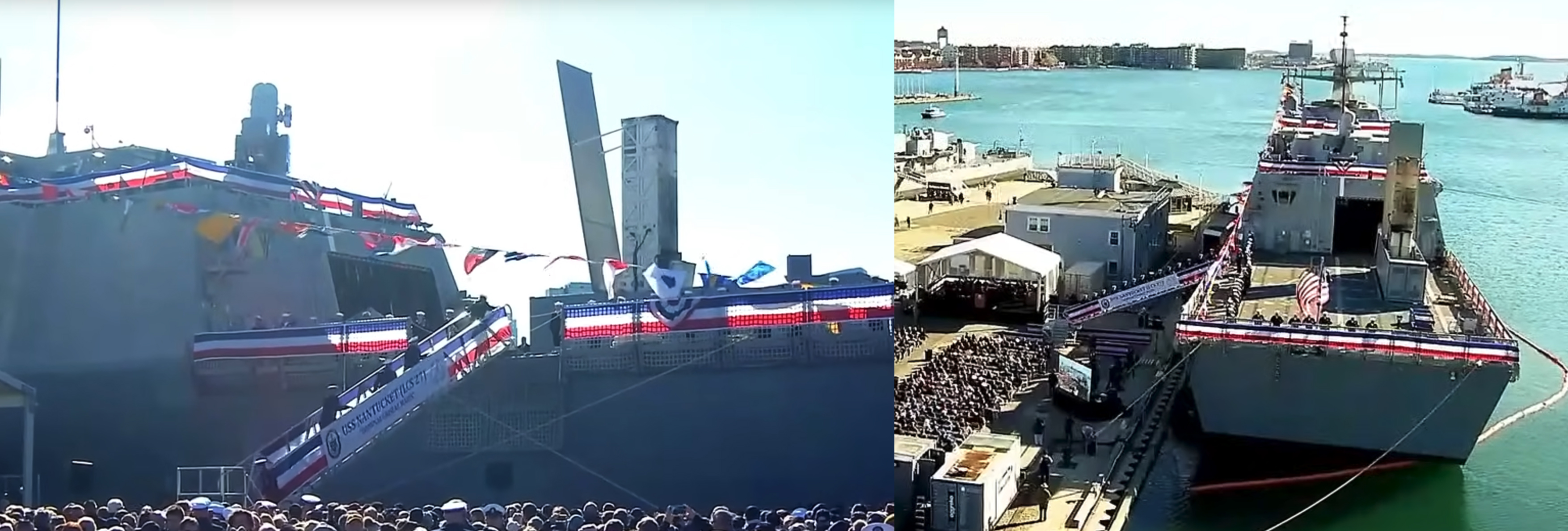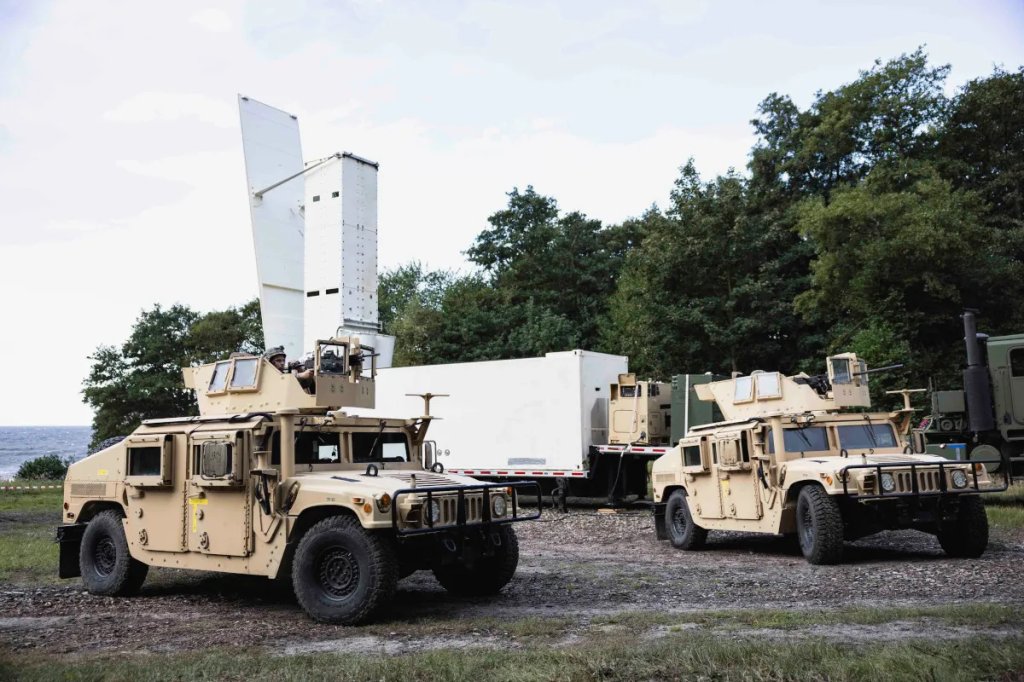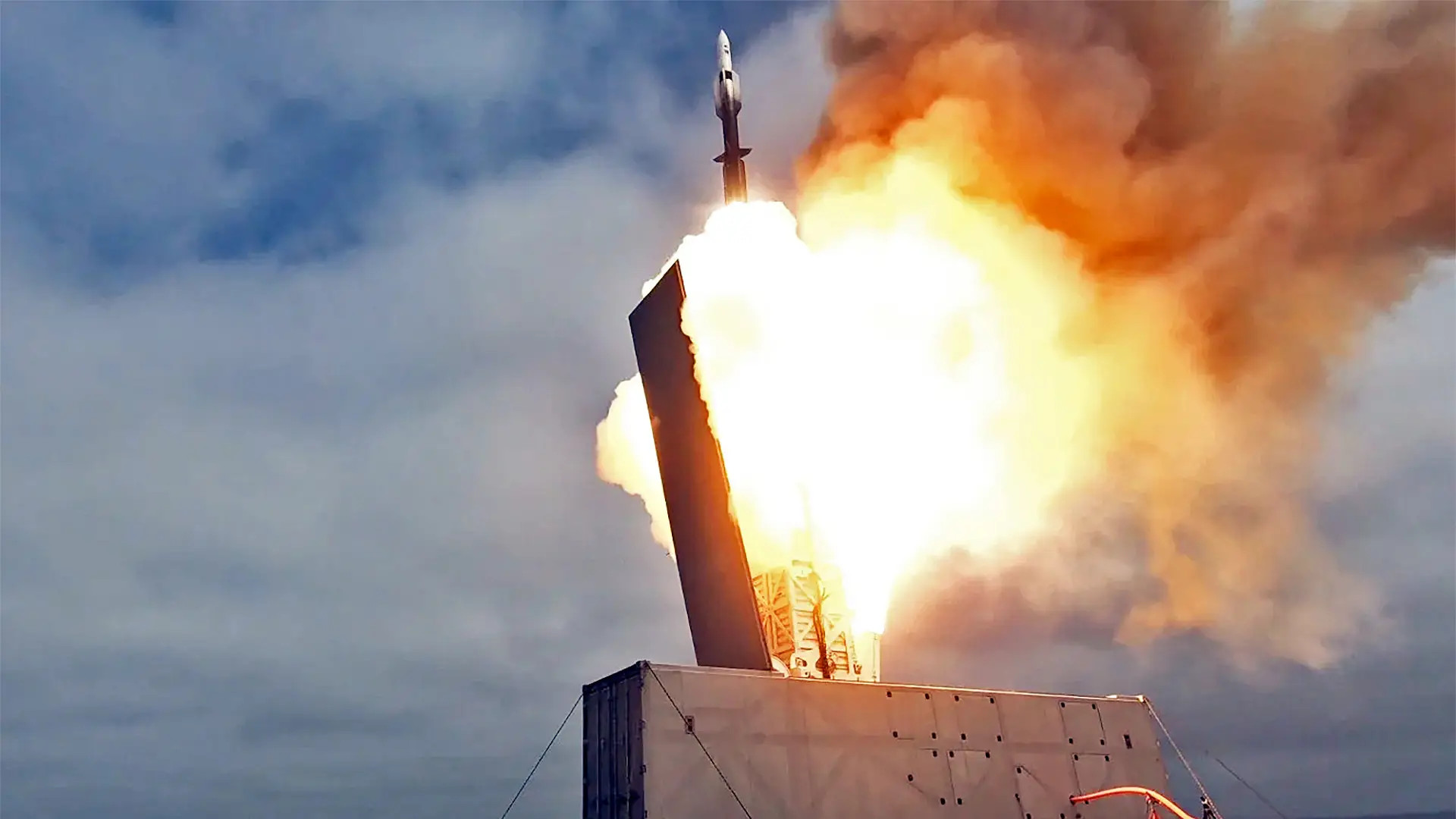In a significant step toward finally giving the Littoral Combat Ship (LCS) fleet greater offensive capabilities, Navy Secretary Carlos Del Toro announced Wednesday that “many” LCS ships will receive the modular Mk 70 Payload Delivery System, allowing the beleaguered LCS to field the type of substantial firepower that has long eluded them.
The Mk 70 is a containerized launch system based on the Mk 41 Vertical Launching System (VLS) in use on many American and foreign warships. It can accommodate a variety of missiles, including the versatile Standard Missile-6 (SM-6) and the Tomahawk Land Attack Missile (TLAM).

Mk 70 will give the LCS fleet “tremendous firepower and even more tactical advantage over our adversaries,” Del Toro said during the U.S. Naval Institute’s 2024 Defense Forum in Washington, D.C.
Once billed as a critical multi-role component of the Navy’s future fleet, the pricey LCS program has involved mission modules that were never fielded, as well as hull crack issues and class-wide propulsion problems that impacted the Independence and Freedom classes, respectively. Such ships have also had limited operational employment.
Del Toro’s comments this week suggest the sea service is bullish on what the Mk 70 can do to reverse the LCS’s fortunes and finally get the ships ready for a higher-end fight, even as questions remain about the LCS’s survivability if they are indeed dispatched “aggressively,” as Del Toro noted.
“LCS is back, Freedom class and Independence class, and we have every intent to deploy them aggressively everywhere around the globe, and the Persian Gulf, obviously, with the mine-sweeping capability and everywhere else it’s needed, particularly in the Pacific with these added capabilities,” Del Toro said.
USNI News’ Sam Lagrone was the first to report Del Toro’s remarks.
TWZ has reached out to the Navy to get more information on the timeline for the upgrades, and which LCSs will be involved.
The Mk 70 is already being rolled out on some LCS, with images from the USS Nantucket’s (LCS-27) commissioning in November 2024 revealing that launcher in place.

Such a capability would allow LCS to fire smaller volumes of several types of missiles, and would be particularly important in a Pacific war with China, where larger surface warships outfitted with the Mk 41 would be in high demand. These vessels would defend against air and missile threats, and to help prosecute stand-off strikes against a large number of sea and shore targets.
Del Toro’s announcement follows the Navy’s successful test-firing of a SM-6 missile from a Mk 70 launcher placed aboard the Independence class LCS USS Savannah (LCS-28) in October 2023 in the Eastern Pacific Ocean. The SM-6’s striking of a designated target “demonstrated the modularity and lethality of Littoral Combat Ships and the ability to successfully integrate a containerized weapons system to engage a surface target,” the Navy said at the time.

Savannah employed a form of the Mk 70 Mod 1 Expeditionary Launcher for the test, TWZ previously reported. In addition to the SM-6, the system can fire land-attack, anti-ship optimized and other Tomahawk variants. Mk 70 launchers are related to the U.S. Army’s ground-based Typhon system, which fires SM-6s and Tomahawks as well.
The Navy has also test-fired a SM-6 from a Mk 70-series launcher aboard the experimental large uncrewed surface vessel Ranger, and has previously demonstrated such launchers in a trailer-mounted configuration during an exercise in Denmark. Lockheed Martin announced in May 2024 that it had successfully test-fired a Patriot PAC-3 MSE interceptor from such a containerized launcher and used it to down a mock cruise missile.

TWZ previously laid out what the Mk 70 would offer after the Navy announced Savannah’s successful test-fire:
“The Mk 70 family does offer a relatively simple way to increase the firepower on a wide variety of ships with suitable deck space. This includes smaller surface combatants with helipads like Independence class LCSs, various amphibious warfare, and certain auxiliary support ships, including commercial designs. The containerized launcher provides immense flexibility just with its ability to fire SM-6s and Tomahawks, and its Mk 41 VLS heritage means more munition options could definitely be integrated in the future.”
The multi-purpose SM-6 can be used against a variety of air and surface targets, with some existing variants even able to engage more novel hypersonic threats , as well as traditional ballistic missiles in their terminal stages of flight, TWZ previously reported. An enlarged version of the SM-6 is being developed that is expected to offer greater range and hypersonic peak speed.

Loading a Mk 70 launcher with Tomahawk missiles would drastically increase the LCS’s capabilities, allowing the class to strike land and sea targets within an area extending roughly 1,000 miles in all directions, which would help hold targets in areas with substantial Chinese defenses. The Tomahawks can also loiter over a target and have their target changed mid-flight.
The Savannah test-fire wasn’t the first time we’ve glimpsed such a setup aboard a LCS. TWZ previously reported on a photo taken during the 2022 Rim of the Pacific (RIMPAC) exercise in Hawaii that showed the USS Tulsa (LCS-16) similarly equipped, although the Navy did not disclose anything about the loadout or whether Tulsa fired any missiles using the system during the exercise.

Del Toro did not mention what sort of sensors would accompany Mk 70 launchers on a LCS. But for SM-6 and Tomahawk, remote sensor and targeting data from external platforms — including those in the air, at sea, on land, and in space — that is datalinked to the ship would likely be the most feasible option considering the LCS’s limited sensor suite. This concept of distributing missiles across more vessels and locales and decentralizing their fire control and targeting has long been of major interest to the Navy.
But strapping on other sensors is a possibility too. For instance, ship spotters picked up what appeared to be a trailer-mounted AN/TPQ-53 radar on Savannah’s flight deck when it left San Diego for the test-fire last year.
That radar is primarily designed to spot and track incoming rockets and artillery rounds, and then determine their points of launch so friendly forces can launch so-called counter-battery strikes, TWZ reported, and it also has demonstrated an ability to detect and track drones.
TWZ previously laid out what else such a radar, also known as the Counterfire Target Acquisition Radar, would contribute, including the improved ability of Mk 70-equipped ships to spot and engage targets independently, regardless of a ship’s built-in capabilities. It offers an example of how systems could be lashed to the ship’s deck to help expand its sensor capabilities for tailored mission sets.
Del Toro also noted Wednesday that “numerous” LCS are now equipped with the Naval Strike Missile (NSM), an anti-ship cruise missile that is very capable, but nowhere near as flexible as the SM-6 or as long-reaching as a Tomahawk. The Navy continues to push ahead with plans to place the NSM aboard its entire LCS fleet by Fiscal Year 2032, Inside Defense previously reported. Go here to read more about NSM aboard the LCS.

But while the Mk 70 launcher and NSM give the LCS fleet some added firepower, there are tradeoffs, as TWZ has reported:
“With regard to the Navy’s LCSs, it is worth noting that using the rear flight deck as a place to mount a Mk 70-series launcher and other associated equipment eliminates their ability to launch and recover helicopters. The service has long touted the ability of the ships to carry MH-60R Sea Hawk helicopters, as well as MQ-8C Fire Scout drone helicopters, as key to helping the ships find and engage targets at extended ranges, defend against close-in threats like small boat swarms, and just provide increased situational awareness.”

Such a tradeoff would be a massive one for the LCS as its flight deck and embarked aviation capabilities are highly prized and greatly expand the ship’s flexibility and independence of operations. Giving up that capability for just four missiles per Mk70, presumably at least three systems can be carried, is a big concession. It is possible that Evolved Sea Sparrow Missiles (RIM-162s) could be quad-packed into each cell like they are on Navy Mark 41 systems.
This would offer the LCS 16 missiles per launcher, but those would be used for self defense and up to medium-range area air defense, that is if the LCS’s sensors can support their employment. The data-link equipped RIM-162 Block II could be key to making that a reality. It would give the LCS a massive upgrade in air defense capabilities and survivability in higher-end threat environments.
The Navy currently operates 25 LCS, and it has decommissioned seven ships since 2021, including some with less than five years of service, a move that the Navy framed as a way to save money for investing in more promising systems.
Will Mk 70 help redeem the acquisition boondoggle colloquially referred to by some as the “Little Crappy Ship,” even as questions remain about how quickly the system can be fielded and the LCS’s survivability in a full-blown war?
Only time will tell.
Contact the author: geoff@twz.com
